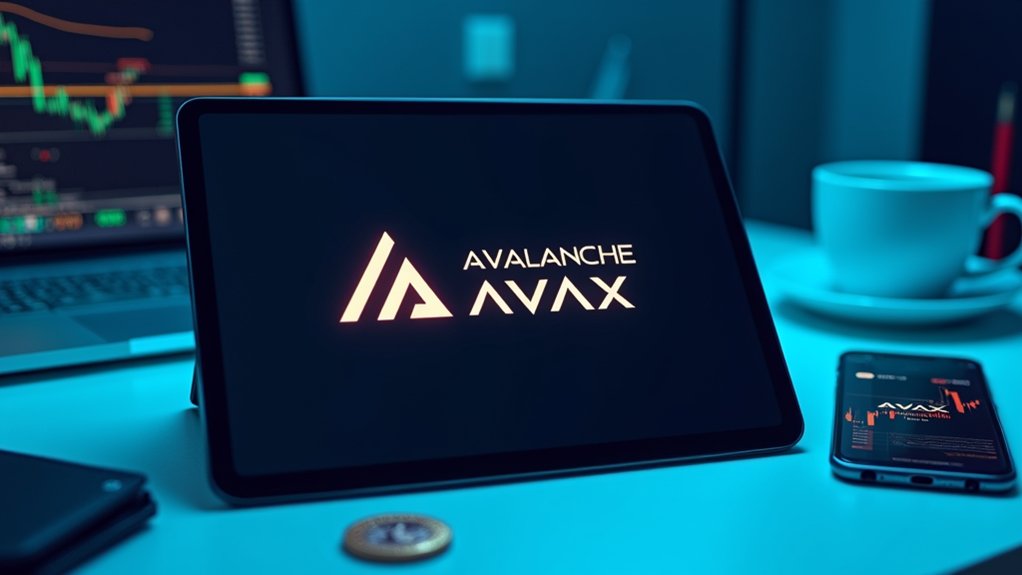Investors should consider selling cryptocurrency when fundamental project indicators deteriorate, predetermined profit thresholds (20-30%) are reached, or market signals indicate structural shifts. Strategic exits require monitoring development progress, regulatory changes, and community engagement levels while implementing disciplined profit-taking strategies to mitigate emotional decision-making. Technical analysis tools like RSI and MACD can identify overbought conditions, and incremental selling at predefined price levels helps secure profits while maintaining exposure. The following strategies offer additional precision for timing ideal exit positions in volatile markets.

When, not if, to sell cryptocurrency remains one of the most challenging decisions investors face in the volatile digital asset environment. Determining the ideal exit point requires careful evaluation of fundamental project indicators, particularly the rate of development progress, adherence to publicized roadmaps, and maintenance of transparent communication channels with stakeholders.
Making smart exit decisions depends on evaluating development progress, milestone achievements, and stakeholder communication transparency.
Projects exhibiting prolonged development stagnation, consistently missed milestones, or diminishing community engagement often signal deteriorating fundamentals that warrant consideration of position liquidation.
The regulatory landscape continuously reshapes market forces, with pending stablecoin legislation and institutional capital flows creating structural shifts that may necessitate portfolio adjustments. As traditional finance increasingly intersects with decentralized systems, yield-bearing alternatives from established financial institutions, such as BlackRock's BUIDL, present competitive pressures that could erode value propositions of certain crypto assets.
Investors must remain vigilant regarding these macro trends, as they frequently precede significant market realignments.
Disciplined profit-taking strategies provide essential frameworks for decision-making divorced from emotional influences. Implementation of predetermined profit thresholds, typically ranging from 20-30%, coupled with technical analysis of overbought conditions via indicators like RSI and MACD, creates systematic exit protocols. Achieving your investment goals often represents an optimal time to consider selling some or all of your cryptocurrency holdings. Incremental selling at predefined price levels helps secure profits while maintaining exposure to potential future growth.
Strategic capital reallocation toward projects demonstrating superior fundamentals or innovative revenue models represents a prudent approach during market shifts, particularly as tokenized real-world assets gain prominence.
Negative news cycles concerning regulatory actions, security vulnerabilities, or management controversies often precipitate prolonged downtrends, as evidenced by the Terra/Luna collapse, which erased billions in market value within days. Monitoring price charts for consistent bearish patterns can provide early warning signs of potential market corrections.
The psychological dimension of investment decisions cannot be overlooked, as fear and greed frequently drive irrational behavior; implementing automated sell parameters helps mitigate these emotional responses.
Tax considerations add further complexity, with strategic timing of sales potentially yielding significant advantages through differential treatment of short versus long-term capital gains, while meticulous record-keeping facilitates compliance with increasingly stringent reporting requirements across jurisdictions.
Frequently Asked Questions
How Do Taxes Work When Selling Cryptocurrency?
When selling cryptocurrency, the IRS classifies transactions like taxable events subject to capital gains taxation.
Profits from assets held less than one year incur short-term capital gains tax at ordinary income rates (10%-37%), while those held longer qualify for preferential long-term rates (0%-20%).
Taxpayers must report all transactions on Form 8949 and Schedule D, calculating their cost basis by including purchase price plus associated fees, regardless of transaction size or whether they received a 1099 form.
Should I Sell All My Crypto at Once or Gradually?
Determining whether to liquidate cryptocurrency holdings at once or gradually depends on several financial considerations, including tax consequences, market volatility, and portfolio diversification strategies.
Lump-sum selling offers simplicity and certainty, eliminating exposure to downside risk, while gradual selling provides continued market participation and potentially reduces the impact of short-term price fluctuations.
Investors should evaluate their profit targets, risk tolerance, and tax situation before selecting an exit strategy that aligns with their broader financial objectives.
What Are the Best Platforms for Selling Cryptocurrency?
The most suitable cryptocurrency selling platforms include Coinbase, offering beginner-friendly interfaces with robust fiat incorporation;
Kraken, providing institutional-grade security and competitive maker/taker fees ranging from 0%-0.26%;
and Binance.US, featuring zero-fee BTC/ETH trading pairs.
For specialized needs, Gemini delivers regulatory compliance with NYSDFS licensing and insured custody solutions,
while Crypto.com incorporates DeFi capabilities, NFT marketplace access, and practical spending options through Visa debit cards.
How Do I Avoid Emotional Decision-Making When Selling Crypto?
To avoid emotional crypto selling decisions, investors should implement predefined exit strategies with clear price targets and risk parameters, while utilizing automation tools like stop-loss orders and trading bots that execute according to predetermined rules.
Effective cognitive bias management requires regular consultation of objective data, mindfulness practices for emotional awareness, and portfolio diversification to prevent overattachment to single assets.
Disciplined information filtering, focusing on fundamental developments rather than market noise, further insulates decision-making from short-term emotional volatility.
Can I Use Limit Orders to Automate My Selling Strategy?
Limit orders serve like effective automation tools for cryptocurrency selling strategies, allowing investors to predetermine exit points based on specific price targets.
By establishing sell parameters in advance, traders can circumvent emotional decision-making while capitalizing on market peaks without constant portfolio monitoring.
These orders execute automatically when assets reach designated price thresholds, particularly when integrated with technical analysis indicators, volatility assessments, and tiered profit-taking strategies across multiple price levels.









